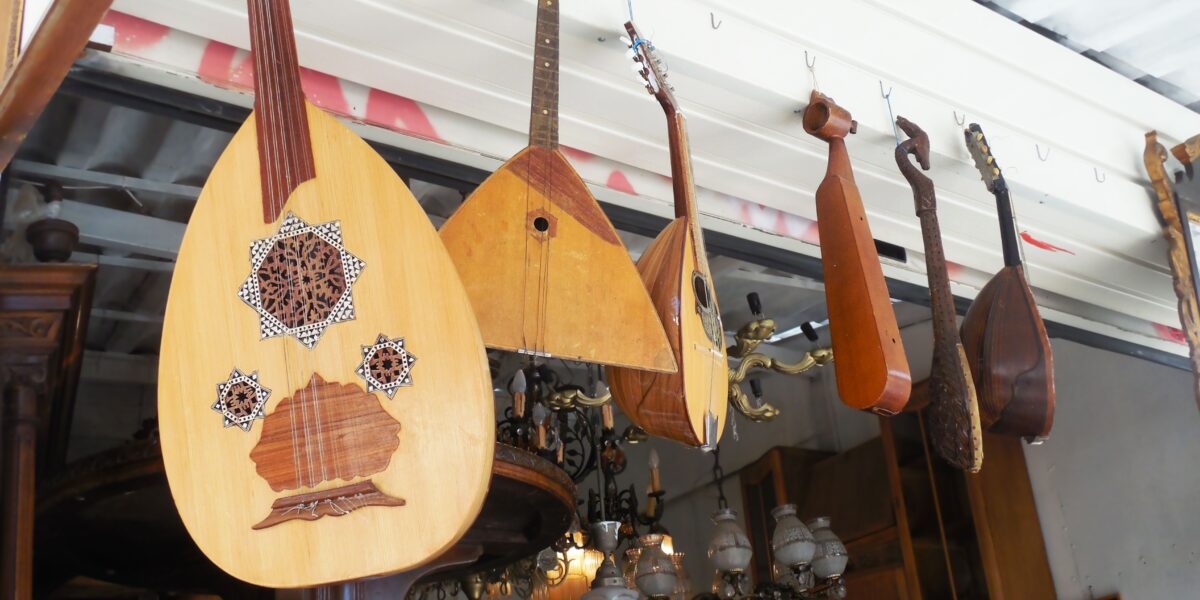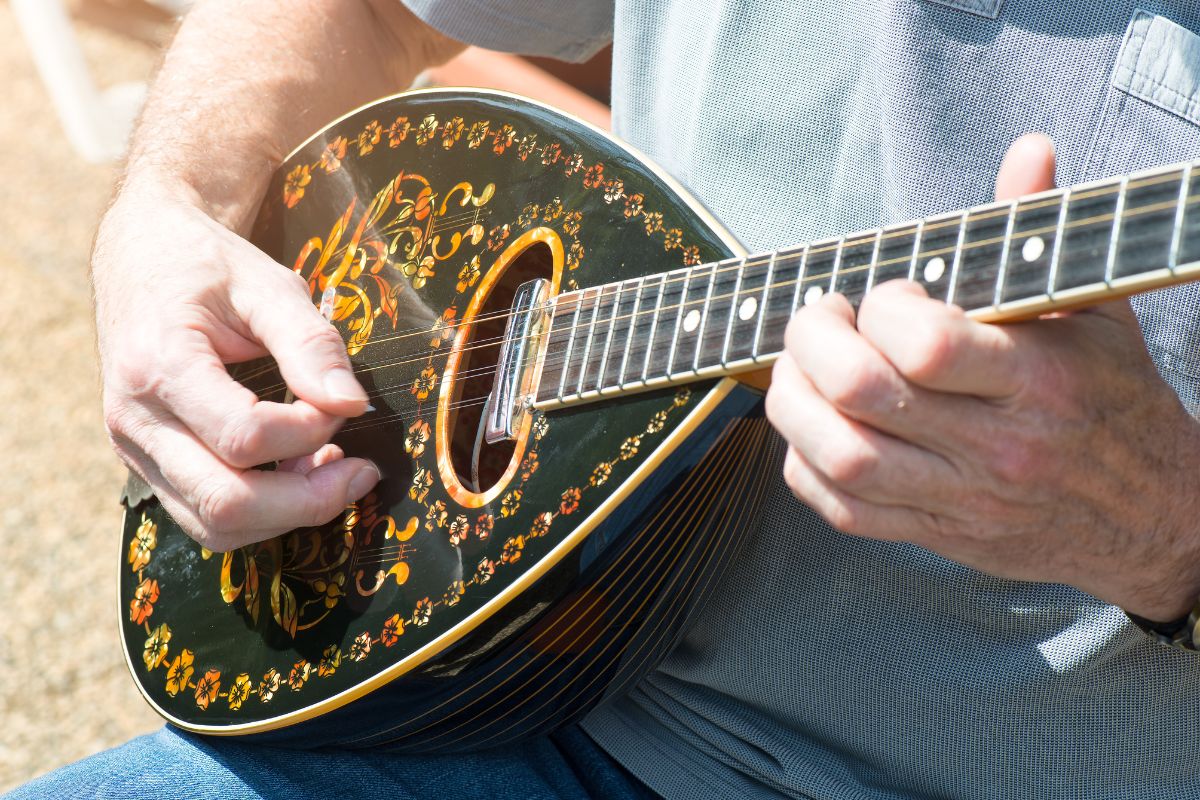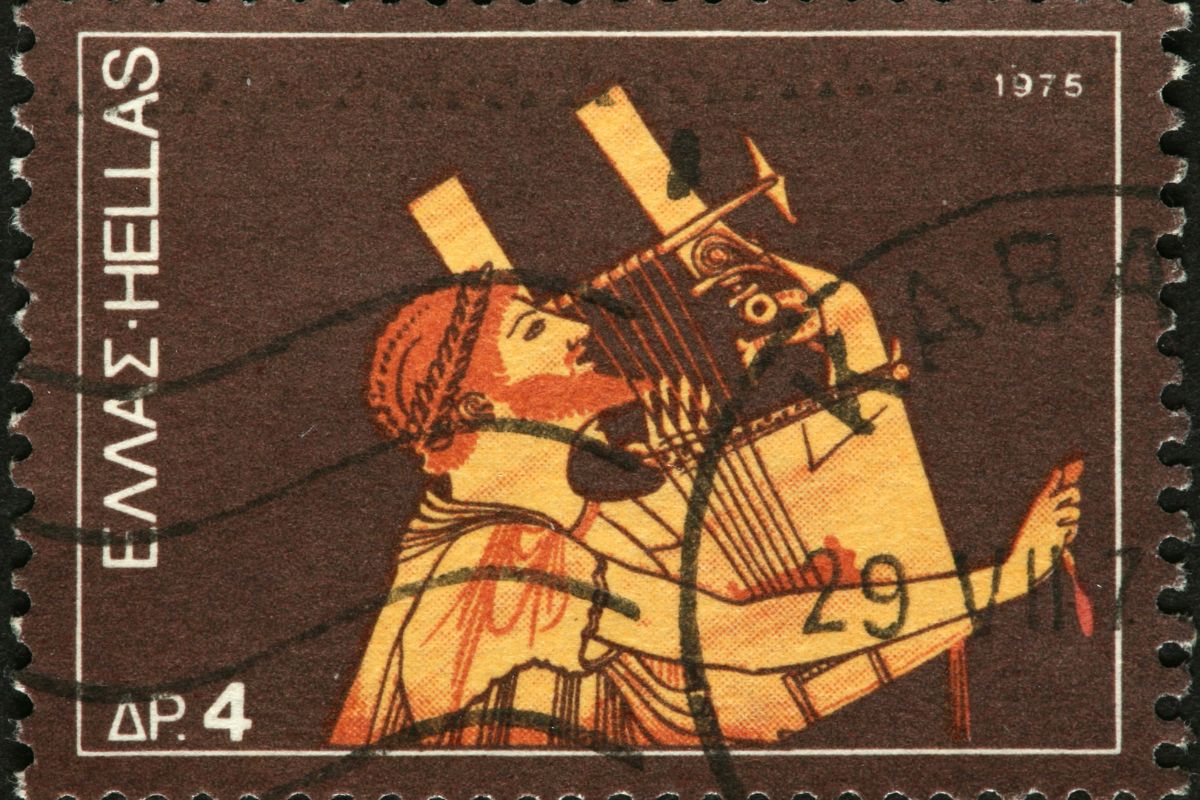Discover 10 Greek Instruments You Should Know

Ancient Greece is known for its philosophy and art, but it also has a rich history of music and Greek instruments.
Musical instruments were very important in Greek culture. They often played during religious ceremonies, parties, and poetry readings. From the ancient lyre to modern instruments like the bouzouki, music was a big part of daily life. This blog talks about the distinctive sounds from the musical traditions of Ancient Greece. It also highlights some key Greek instruments that are still important in Greek culture today.
The Role of Sound in Ancient Greece
In Ancient Greek music, people saw sound as a gift. Music was a big part of everyday life. It played a role in religious events, sports competitions, and plays. Ancient Greek art showed instruments like the lyre and the kithara, showing how important they were in culture. Apollo, the god of music, was said to play these ancient Greek instruments, highlighting their deep meaning. Music was important during both happy and sad times. Composers like Terpander, known as the father of Greek music, created beautiful melodies based on math. These melodies made complex sounds. The Greeks believed music could encourage people to take action. Athletic games often had musicians to inspire the players. Music was more than just fun; it connected with philosophy, poetry, and storytelling. It left a lasting impact on ancient Greek art and culture.
Contemporary Sounds of Greece
The energy of Greek music goes from ancient times to modern styles. Popular music like Rebetiko and Laiko is still popular in Greece. These genres tell tales of strength and love. They began from the hardships of Greek refugees and grew to show the spirit of the nation. Professional musicians still honor these styles, mixing traditional sounds with newer tunes. The Greek language plays a big role in music. It adds meaning to the lyrics. Greek instruments like the bouzouki are famous around the world for their rich tones. They have inspired many artists. Folklore music is alive in small village events or big city festivals. The melodies often use instruments that are given from one generation to another. Greece’s modern music shows its rich history, showing that old influences still matter today.

Explore 10 Must-Know Greek Instruments
Greek instruments hold many years of history and stories. They range from old rituals to new performances. These instruments blend artistry and skill to produce deep sounds that characterize Greek culture. Instruments like the beautiful bouzouki and the strong daouli drum are key parts of Greek musical traditions. Each instrument on this list shows not just great skill but also has important history. If you are a musician or simply love music, learning about these instruments connects you to Greece’s exceptional musical heritage. Let’s dive in!
Bouzouki — Greek String Instrument
The bouzouki is a famous stringed instrument from Greece. It has a sharp and melodic sound. Its roots go back to the tambouras family of Ancient Greece. In the early 20th century, Asia Minor refugees introduced the bouzouki, adding to its modern importance. The instrument has steel strings, which can come in sets of three pairs (trichordo) or four pairs (tetrachordo). Players use a plectrum to pluck the strings. Manolis Chiotis was a well-known musician who made the tetrachordo bouzouki popular in the 1950s. This instrument became vital to Rebetiko and Laiko music. It represents Greece’s strong spirit during tough times. With 27 frets, it supports a range of scales. Its rich sound matches well with lyrics that express longing and celebration. Despite its difficult past, including issues with the police against musicians, the bouzouki is now a respected part of modern Greek music.
Baglamas — A Smaller Sibling of the Bouzouki
The baglamas is a small stringed musical instrument that looks like a bouzouki but is more compact. It is easy to carry around. People used to hide it under their coats during Rebetiko gatherings to avoid being noticed. The baglamas has three pairs of strings tuned in D-A-D, creating high notes that sound nice together. The frets help musicians play accurately, adding depth to the music and rhythms. The baglamas became popular in the early 20th century in marginalized communities, representing strength and coping. Today, it still plays an important role in Greek music. It often accompanies bouzouki performances, making the sound richer. As a beloved folk instrument, its story shows the creativity and resourcefulness in Greek musical tradition.
Tzouras — The Compact Companion of the Bouzouki
The tzouras is a traditional string instrument. It has a long neck and a smaller body compared to the bouzouki. This instrument is known for its unique twangy sound. It keeps the appeal of the old bouzouki and tambouras music while also finding its own style. The tzouras has a chromatic scale range thanks to a metal screw system. This gives musicians more options, making it popular among both traditional and modern players. The tzouras usually has a wooden body made from staves. Its three pairs of strings are tuned in D-A-D, letting musicians try out different melodies. They often use drone-like sounds to create a rustic vibe. Today, many folk musicians enjoy playing the tzouras. It adds richness to Rebetiko music and brings back interest in ancient Greek music styles.
Lyra — Strings of Crete
The cretan lyra is a symbol of Crete’s rich culture. This bowed instrument has Byzantine roots and dates back to before 961 AD. Its growth is linked to local stories and music traditions. The lyra has three strings and is usually made from finely crafted wood, giving it a unique pear-shaped design. Musicians play it vertically on their laps. They use their fingernails to touch the strings instead of pressing them, which is a special technique. The melodies from the lyra are closely tied to the island’s folklore. They enhance weddings, dances, and festivals. Traditionally, another instrument like the Cretan laouto accompanied the lyra. This added rhythm and harmony to the music. With its trills and decorations, the lyra serves as both a rhythmic and melodic instrument, keeping Crete’s historical sounds alive in modern music. Its swaying tones link today’s listeners to the rich traditions of the Byzantine era.
Chordophones — Ancient Greek Harps
Ancient chordophones like the kithara and the lyre showed early progress in music. The kithara has seven strings and belongs to the harp family. It made lovely melodies for epic poems and big banquets. According to mythology, Hermes made it from tortoise shells. Apollo, the god of music, later played it. The lyre, a popular four-string instrument, was simpler to learn and enjoyed at local events. These instruments expressed feelings from sadness to joy and changed their styles for different settings. Their tunes often had a precise structure, highlighting their significance in ancient music ideas. Today, chordophones remind us of their deep cultural and spiritual impact on Greece’s artistic history.

Aerophones — Traditional Greek Wind Instruments
Aerophones, such as the floghera and klarino, are important in traditional Greek music. The floghera is a bamboo flute that dates back to ancient times. Its simple but appealing sound was often used by shepherds when they were alone. With seven finger holes, musicians can vary tones and create melodies that connect to folk music traditions. The klarino is another type of aerophone. It comes from the ancient aulos. The bright sounds it makes are perfect for dances like the tsamikos and are essential in the music from Epirus. Instruments like the gaida bagpipe use the principle of the stopped pipe. This lets them produce steady sounds without needing breaks for breath. These instruments show the skill of Greek musicians. Their craft allowed them to create complex performances using simple materials. Together, aerophones represent both the ancient art and creative designs still found in Greek folk music today.
Daouli — A Percussive Staple in Greek Folk Music
The daouli drum is a key instrument in Greek folk music. It is known for its strong rhythm. Musicians wear it on their shoulder with a strap. The daouli has two drumheads—one makes a deep sound and the other a higher one. They hit the right side with a stick and the left side with a switch. This helps them create lively beats that go well with dancing. The daouli is used in village parties and orchestras. It makes important rhythms that match well with wind and string instruments. It is usually made from goatskins or wolf skins, showing the skill of traditional makers. Even though it is very old, the daouli keeps bringing energy to performances in Greece. It remains crucial for the rhythm in folk melodies.
Santouri — The Greek Hammered Dulcimer
The santouri is a beloved hammered dulcimer. It is famous for its rich melodies and deep rhythms. Musicians strike metal strings using soft hammers. This creates lively and percussive sounds. It comes from a type of Byzantine psalterion and has been popular in both mainland and island music for a long time. Its unique tuning fits well with Greece’s music styles. The melodies and chords add a lot of life to performances. Today, the santouri plays a key part in traditional koumbania groups. It often works well with violins, klarinos, or laoutos. If playing old classics or enhancing folk dances, the santouri is an important part of Greece’s musical tradition.
Gaida — The Distinctive Greek Bagpipe
The gaida is a type of bagpipe found in northern Greece. It is popular in the regions of Macedonia and Thrace. This instrument is made from animal skins, including goat leather. The gaida has a reed and two pipes. One pipe is for a steady sound, and the other is for playing tunes. Its deep, rich tones add joy to village dances and traditional celebrations. What makes the gaida unique is its ability to play long melodies without stopping. This is because of how air flows through the bag. It was once popular among shepherds and shows the strength and creativity of rural life. Today, the gaida’s one-of-a-kind sound works well with percussion instruments like the daouli. This keeps the true spirit of northern Greece’s folk traditions alive.
Floghera — A Bamboo Flute with Roots in Antiquity
The floghera is a bamboo flute that shows simple beauty. It goes back to ancient times. This wind instrument has seven finger holes. Musicians can make melodies that are deep in folk music traditions. To play it, you blow across the open end. The floghera is often linked to shepherds who made music for their quiet time. There are different types, like the longer flutes called tzamaras from Epirus. Flogheras are flexible and can fit into many music styles. They reflect how resourceful the early Greek craftsmen were because they are made from natural materials. Today, the floghera still enchants many people. It brings an earthy feel to folk music performances and shows how ancient Greece is connected to nature and sound.
In conclusion, looking into the rich variety of Greek instruments helps us appreciate the culture more. It also shows how important music has been in shaping Greek identity over time. Each instrument has its charismatic sound and meaning. They add to the lively scene of modern Greek music while also reflecting the traditions from ancient times. If you’re attracted to the beautiful tunes of the lyra or the lively rhythms of the daouli, these instruments let you feel the heart and soul of Greece. We want you to explore this musical journey, listen to these sounds, and maybe even find a new love for the wonderful world of Greek music.
